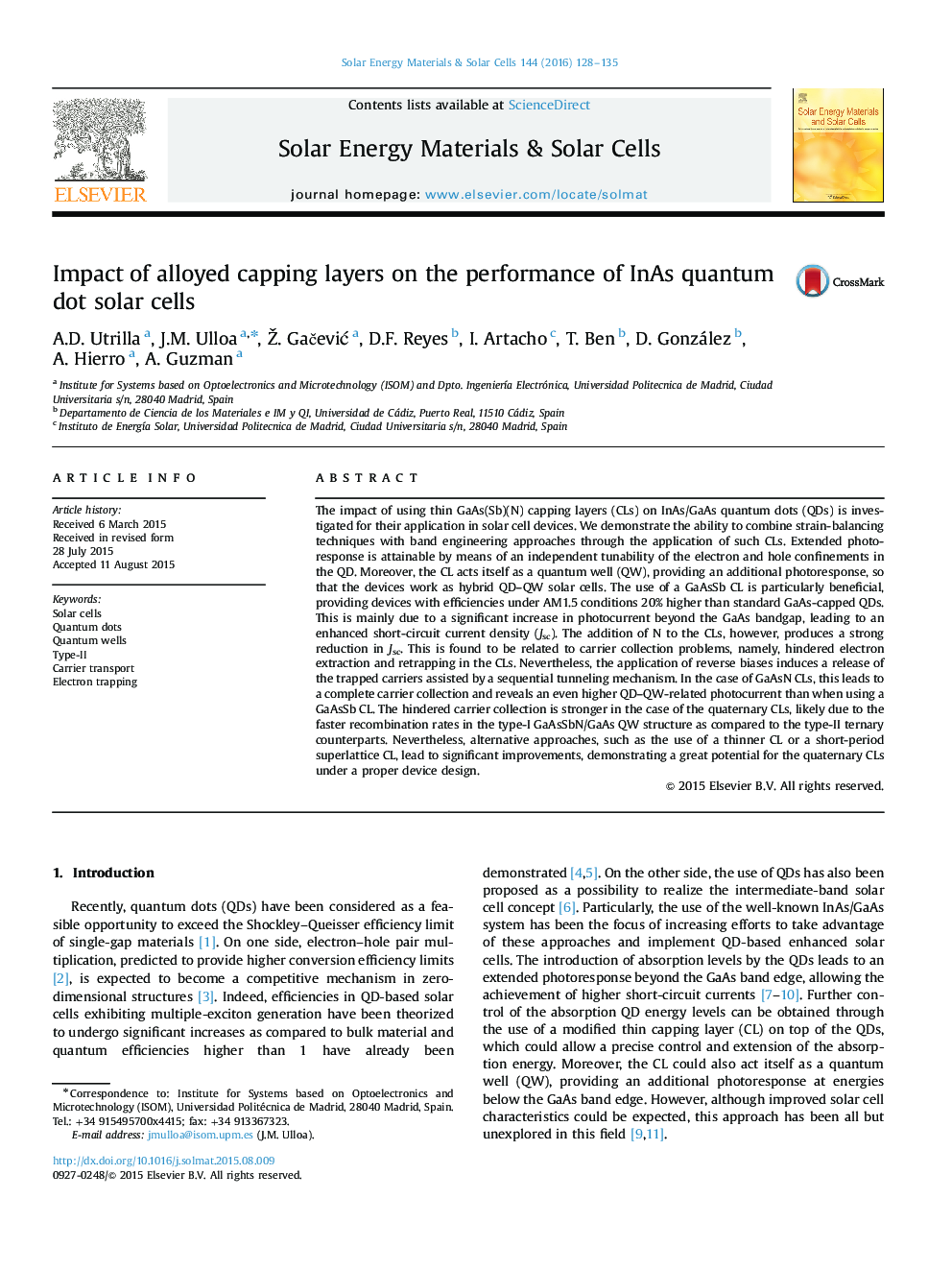| Article ID | Journal | Published Year | Pages | File Type |
|---|---|---|---|---|
| 6534881 | Solar Energy Materials and Solar Cells | 2016 | 8 Pages |
Abstract
The impact of using thin GaAs(Sb)(N) capping layers (CLs) on InAs/GaAs quantum dots (QDs) is investigated for their application in solar cell devices. We demonstrate the ability to combine strain-balancing techniques with band engineering approaches through the application of such CLs. Extended photoresponse is attainable by means of an independent tunability of the electron and hole confinements in the QD. Moreover, the CL acts itself as a quantum well (QW), providing an additional photoresponse, so that the devices work as hybrid QD-QW solar cells. The use of a GaAsSb CL is particularly beneficial, providing devices with efficiencies under AM1.5 conditions 20% higher than standard GaAs-capped QDs. This is mainly due to a significant increase in photocurrent beyond the GaAs bandgap, leading to an enhanced short-circuit current density (Jsc). The addition of N to the CLs, however, produces a strong reduction in Jsc. This is found to be related to carrier collection problems, namely, hindered electron extraction and retrapping in the CLs. Nevertheless, the application of reverse biases induces a release of the trapped carriers assisted by a sequential tunneling mechanism. In the case of GaAsN CLs, this leads to a complete carrier collection and reveals an even higher QD-QW-related photocurrent than when using a GaAsSb CL. The hindered carrier collection is stronger in the case of the quaternary CLs, likely due to the faster recombination rates in the type-I GaAsSbN/GaAs QW structure as compared to the type-II ternary counterparts. Nevertheless, alternative approaches, such as the use of a thinner CL or a short-period superlattice CL, lead to significant improvements, demonstrating a great potential for the quaternary CLs under a proper device design.
Related Topics
Physical Sciences and Engineering
Chemical Engineering
Catalysis
Authors
A.D. Utrilla, J.M. Ulloa, Ž. GaÄeviÄ, D.F. Reyes, I. Artacho, T. Ben, D. González, A. Hierro, A. Guzman,
